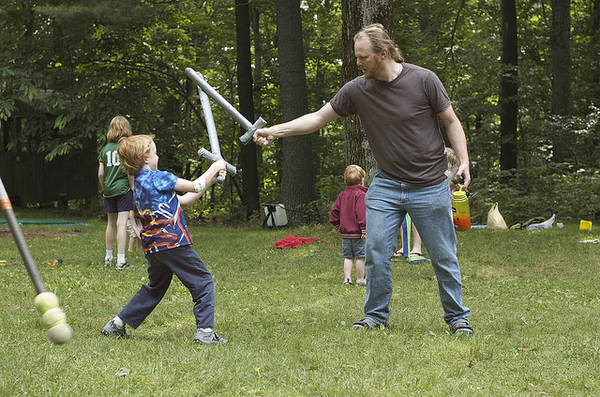Multiplication Facts Should Not Be Scary
Math seems to be the universal “scary” subject. Many students assume that math must be painful: after all, dreading math is so common it’s practically clichéd. In the case of K-5 addition and multiplication facts boredom and loss of focus can be issues. Sword fighting can avoid painful math associations and help cut through the fear and boredom issues by associating math with non-scary fun. Also, the motion of the sword hand crossing the body midline promotes cross-lateral brain involvement which improves focus, eye/hand coordination, and math fact retention.
For students with dyslexia, memorizing math facts can be especially difficult. In fact, I’ve had many students who just could never remember very many of the facts, but later became outstanding mathematicians. Higher math has nothing to do with memorized multiplication facts, as it turns out. If you have a dyslexic student who also struggles with traditionally taught math, it’s worth your time to take a look at Mind’s Eye Mathematics. This YouTube site is devoted to the work of Jennifer Plosz, who specializes in teaching math for the wonderful dyslexic brain.
Sword Play Makes Math Facts Fun
One Waldorf-inspired technique for learning multiplication facts is Sword Play:
Use padded practice swords. You can make your own or buy inexpensive sets. You and the student (or two students) have a mock sword fight, “like in the movies!” Each time the swords meet you say part of the math fact. Do it outside with lots of good hard whacking (of swords, not people.) NINE! TIMES! THREE! IS! TWENTY-SEVEN! Change hands, repeat. Fun, effective, helps students pair good feelings and movement with math. I suggest saying the same fact over and over rather than switching facts. It’s much better to know one fact for sure than to have a tangle of fact parts tumbling around in one’s head!
Sword Play is Just the Beginning
There are lots of ways to incorporate movement into learning, and many students blossom when allowed to learn in this way. See http://www.dyslexiakit.net/learning-kinesthetic-movement/ for more touching and moving teaching techniques.
By Yvonna Graham, M.Ed; www.dyslexiakit.net
